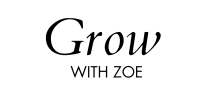

Hey there…
I’m Zoe (you probably guessed that from the name of the blog, right?😉).
Grow With Zoe is my little corner of the internet where I share my thoughts on everything from fashion and beauty to travel and personal growth.
I’m currently residing in Manchester, UK so follow my journey to see what I get up to in and around the North West, as well as reviews and guides on the products I’m using, the books I’m currently reading aka my lifestyle staples.
Shop my favourite
things…
Below, you’ll find some of my current faves.











